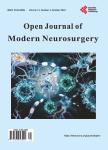The EEG Analysis of Auditory Emotional Stimuli Perception in TBI Patients with Different SCG Score
The EEG Analysis of Auditory Emotional Stimuli Perception in TBI Patients with Different SCG Score作者机构:Institute of Higher Nervous Activity and Neurophysiology of Russian Academy of Science (IHNA) Moscow Russia
出 版 物:《Open Journal of Modern Neurosurgery》 (现代神经外科学进展(英文))
年 卷 期:2014年第4卷第2期
页 面:81-96页
学科分类:1002[医学-临床医学] 100214[医学-肿瘤学] 10[医学]
主 题:Comatose Patients TBI EEG Rhythmic Power Recovery
摘 要:The electroencephalographic research has focused on the variety of responses to emotional auditory stimulation in patients at different stages after craniocerebral trauma. The patients sampling consisted of three groups: 13 comatose patients, 14 severe TBI patients, 12 moderate TBI patients, the control group consisting of the 28 healthy adults. The subjects were stimulated with auditory stimuli containing significant sounds (coughing, laughing, crying, bird singing, barking, scraping) and control sounds (white noise). We have analyzed statistically significant differences of power of the rhythmic activity registered during the presentation of different types of stimuli using Matlab. The t-test differences for each type of stimuli and the background were calculated as well as major ANOVA-effects. The results showed that EEG-response was based on the emotional stimuli valence, the consciousness levels, the severity of injury and the recovery process. The TBI patients showed lower theta-rhythm power in the frontal areas in response to the all emotional stimuli. The alpha-activity was reduced in the TBI patients: the alpha-rhythm depression was most vividly pronounced in the control group. The alpha-rhythm acceleration in the occipital areas was found only in the moderate TBI patients and only to the emotional stimuli. The severe TBI and comatose patients showed lower response rates to the neutral stimuli and higher response rates to the unpleasant physiological stimuli.



